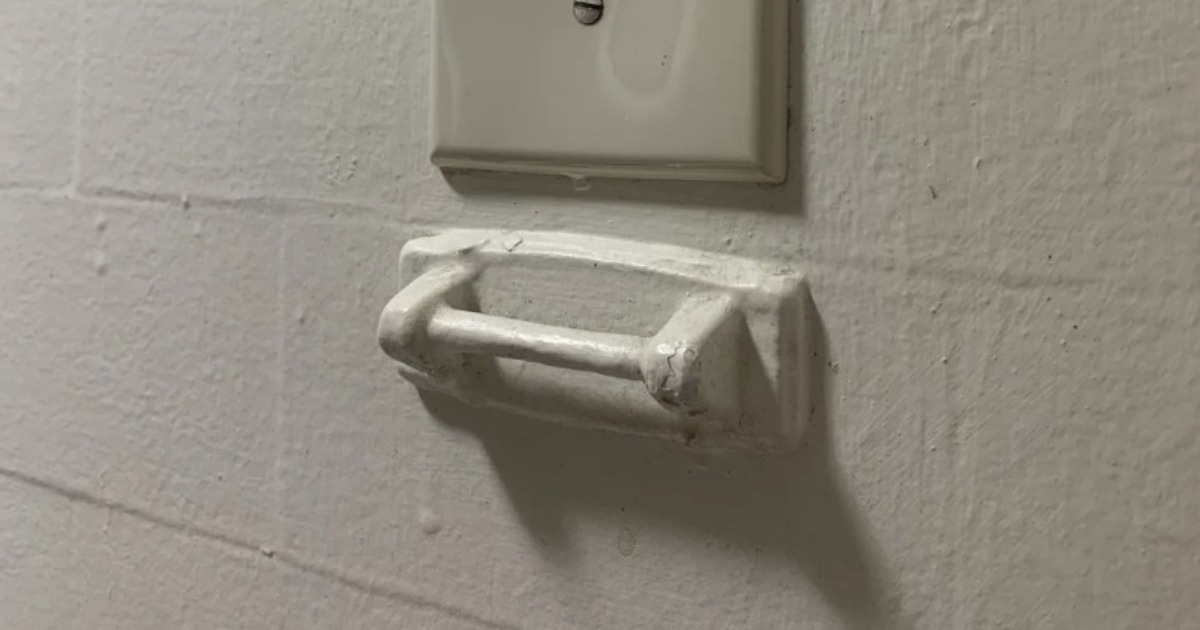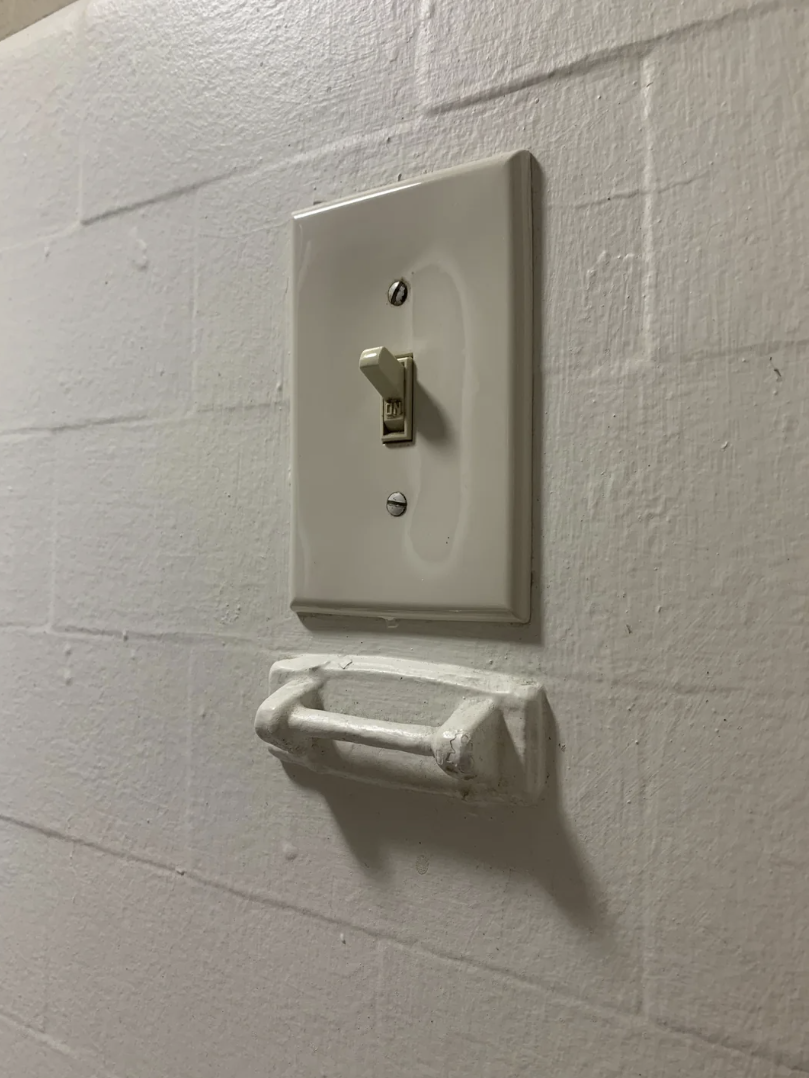What Is That on the Wall?

Source: Reddit
Older homes (early 1900s to 1940s) sometimes have small metal or ceramic hooks on bathroom walls, which may have been used as a shaving strop hook, although they are too small for towels and somewhat awkwardly located for toilet paper.
There’s a reason for their existence; they were originally shaving strop hooks.
Shaving Straps and Strops
Straight razors were used by most men prior to electric and cartridge razors. Straight razors were used every day. To keep them sharp, the leather strop was used to “strop” (or hone) the blade before each shave.
One end of the strop was in the hand and the other end was attached to the hook on the wall. The amount of tension provided sufficient friction to hone the blade so it would glide smoothly across the leather.
Placement with Purpose
Hooks were installed at around waist high. Often the hook was below a mirror or near a light switch. Placement facilitated the ability to see yourself while you were shaving in a well lit area and to easily wash your face.
Hooks were made of strong materials such as ceramic or cast iron and were generally left in place long after the home was occupied. They were frequently covered in layers of paint and remained intact.

Shaving as a Daily Routine
Each part of the process including applying hot towels, stropping, etc. was done slowly and carefully. A hook for the strop was not decorative, it was part of the process.
A hook on a wall indicated a time when tools were used until they wore out and then were replaced. Shaving was a deliberate process.
Now Forgotten Fixtures
Most people today don’t recognize what this fixture was used for and therefore believe it to be either an unusual relic or some kind of misidentified hardware. What they really represent is a time when all tools were made to last and there was pride taken in doing things the right way.
This hook provides a small window into a bygone era – a domestic detail, yet one which holds meaning.
The Hook Was Important
The small hook on the wall was a shaving strop hook and a necessary tool for straight razor shavers. It was used as part of a daily routine that emphasized attention to detail and craftsmanship.